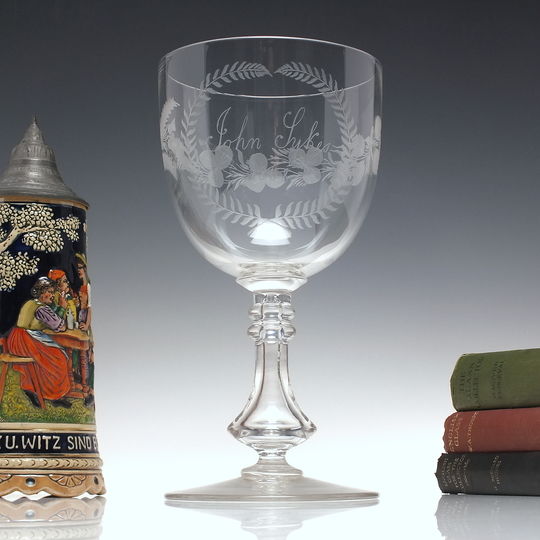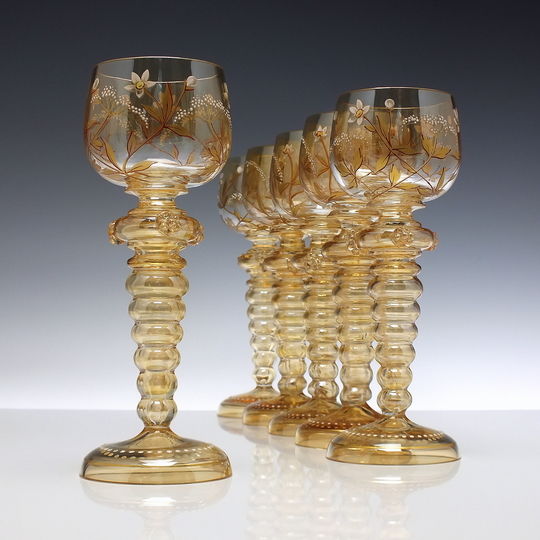Technical Description
Spiral ‘polychrome filigrana’ glass bowl from the Venetian glass manufacturer Salviati & C, produced under the ownership of Dr Antonio Salviati. Decorated with spiraling pulled bands of opaque white in combination with amethyst and copper aventurine. Two winged ‘cherub masks’ are applied either side of a turned, footed form. Rough pontil and slag seed material, consistent with its age.
Date & Origin
Island of Murano, Italy, c1859-72.
Condition
There is a stress crack behind one of the cherubs which can only be seen from the inside. Caused by stress during the colling process.
Dimensions
Height: 5.7cm Diameter: 10.3cm.
Comments
An exquisite example, this piece exhibits early Salviati & C. patterns in both decoration and form, as attributed by the Murano Glass Museum, Venice. View those three examples here: Cherub bowl - https://bit.ly/35XxMyq Beaker pattern - https://bit.ly/3hhrXAZ Decanter pattern - https://bit.ly/3dnvU6b
Further investigation reveals that the ‘cherub dish’ is documented as pattern 601 among 1 of 23 watercolour and ink papers held in the MET Museum. These papers are stamped “Compagnia di Venezia & Murano - Venezia - Vetri e Musaici” (Company of Venice and Murano - Venice - Glass & Mosaic) and show a variety of early glassworks including mirrors, chandeliers and goblets. View here: https://bit.ly/3y9kqv8
The papers seem to be a finely curated collection of best works, indicating that this dish was included for exhibition as a stand-alone object. As Salviati & C. was renamed Venice and Murano Glass and Mosaic Company Limited in 1872, it would follow that this is a pattern list from their first International Exhibition held in Vienna in 1873 where they won 13 prizes for decorative arts.
Antonio Salviati left the company to re-establish his artistic vision in 1877 and by the Paris exhibition of 1878 focus had shifted to replicating roman murrine glass, certainly by the Milan exhibition in 1881, the Company of Venice and Murano had moved onto their show-stopping display of the first of its glass phoenixes. None of which is included within these 23 watercolour pages leading us to a most probable production date of between 1859 and 1872 while under the name of Salviati C.
This technique is known as polychrome filigree, a type of fused trailing that was first revived around the 1840’s most notably by the likes of Pietro Bigaglia and Lorenzo Graziati.
Sometimes termed “latticino,” named for the combination of milk (lattimo) glass threads fused in crystal (cristallo). This specific technique is more modernly referred to as “filigrana” (filigree) or pulled trailing.
This item is out of stock.
Complemented Items
-
Pair of Large Victorian Enamelled Amethyst Glass Mantel Vases c1880
£250.00 $312.80 -
Victorian Union Engraved Glass Wine Goblet c1868
£380.00 $475.46 -
Rare Set of Six Friedrich Heckert Gilded and Enamelled Wine Glasses c1900
£750.00 $938.40 -
Georgian Enamelled Opaque Twist Wine Glass c1765
£1,250.00 $1,564.00










